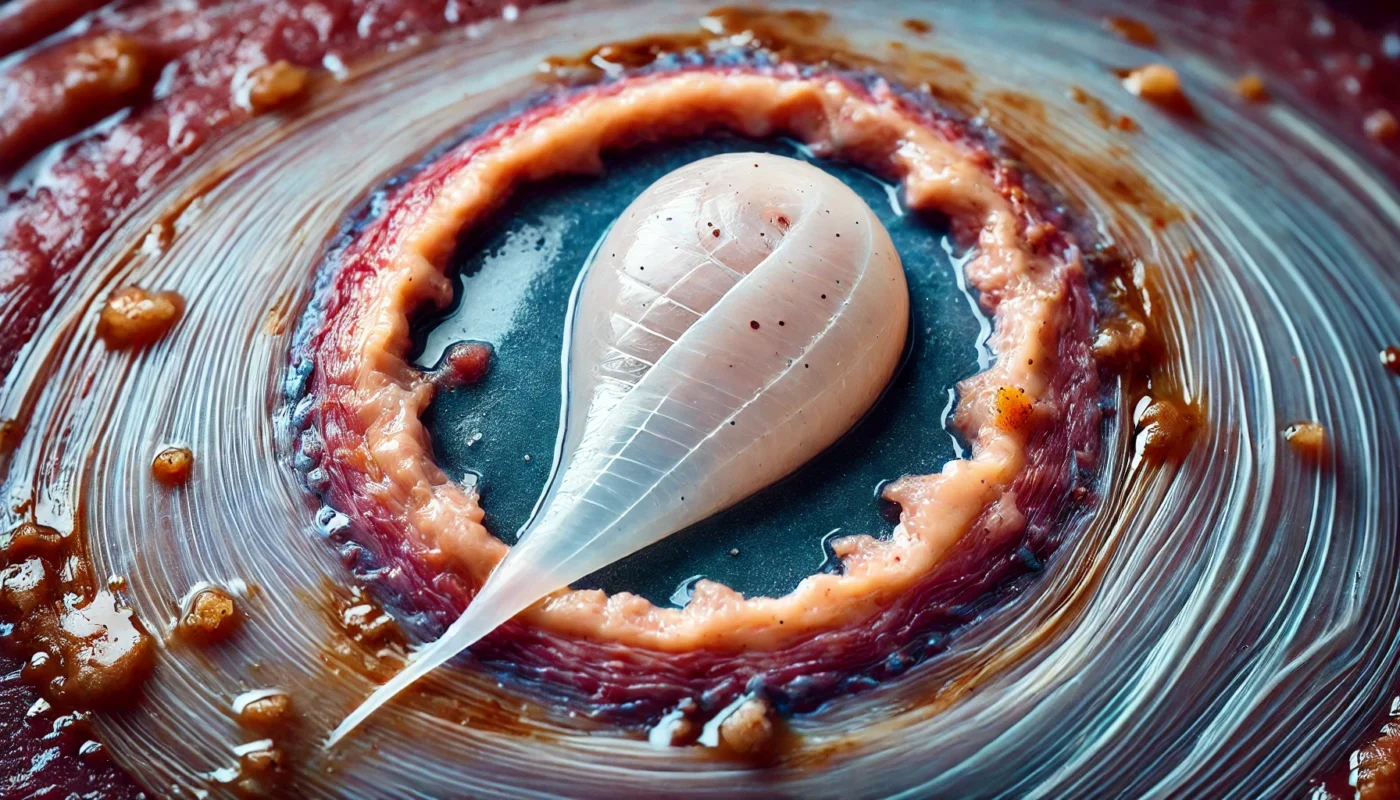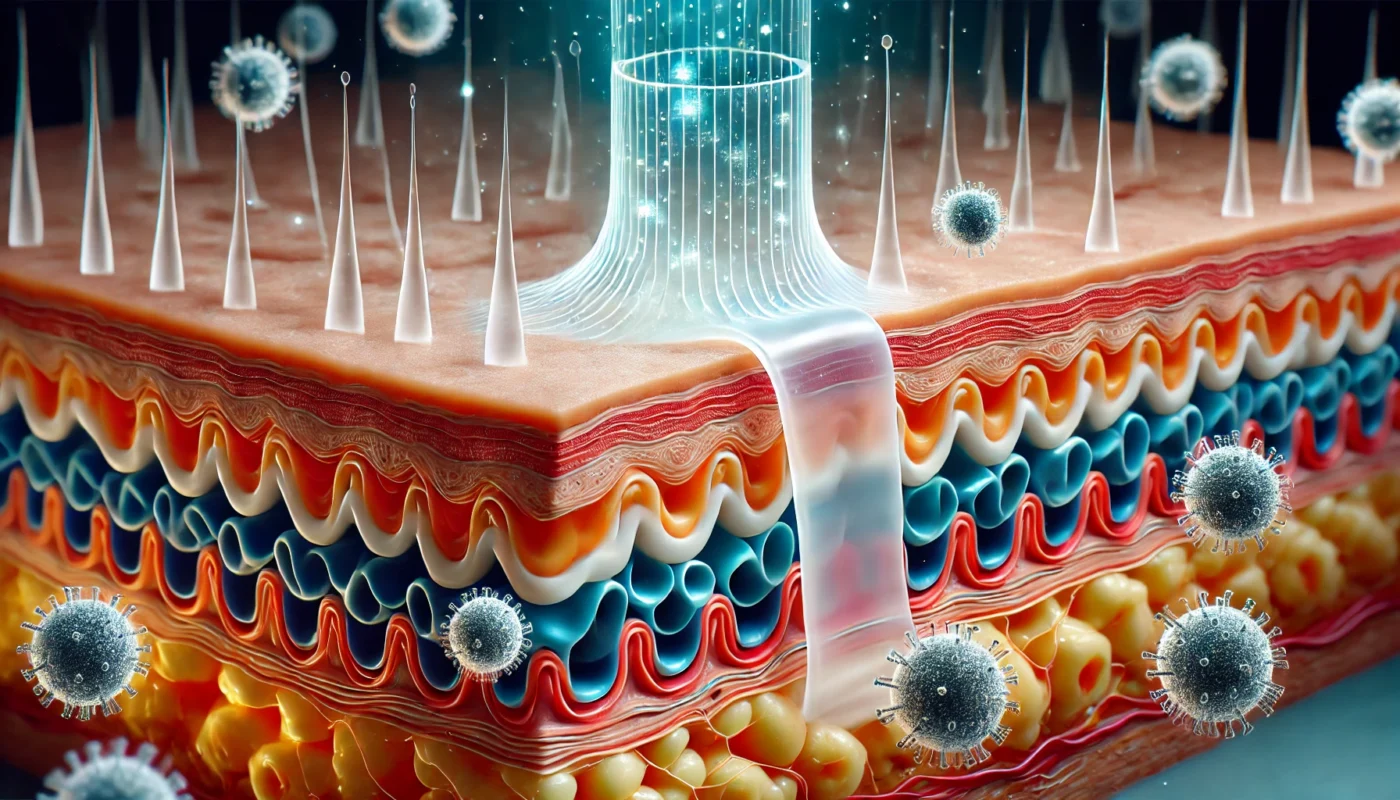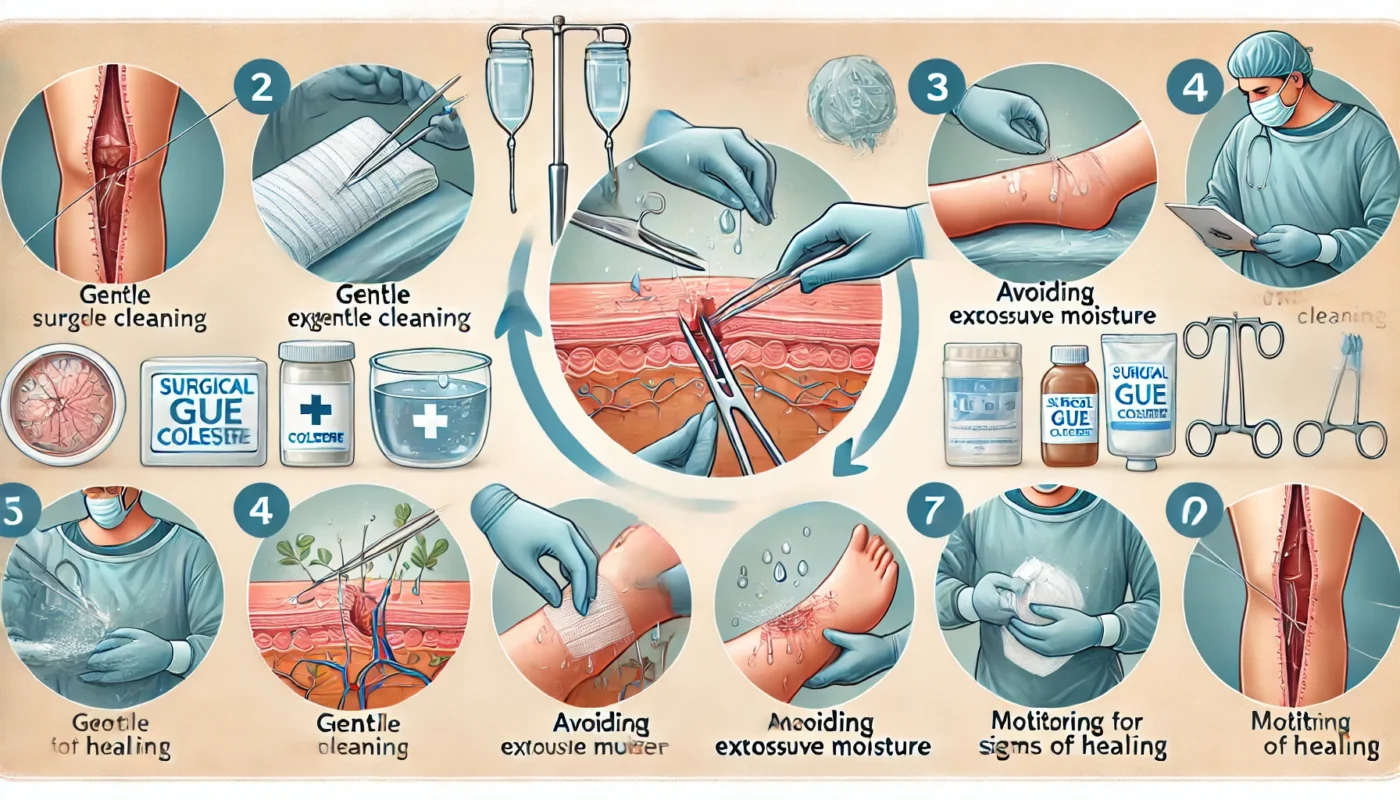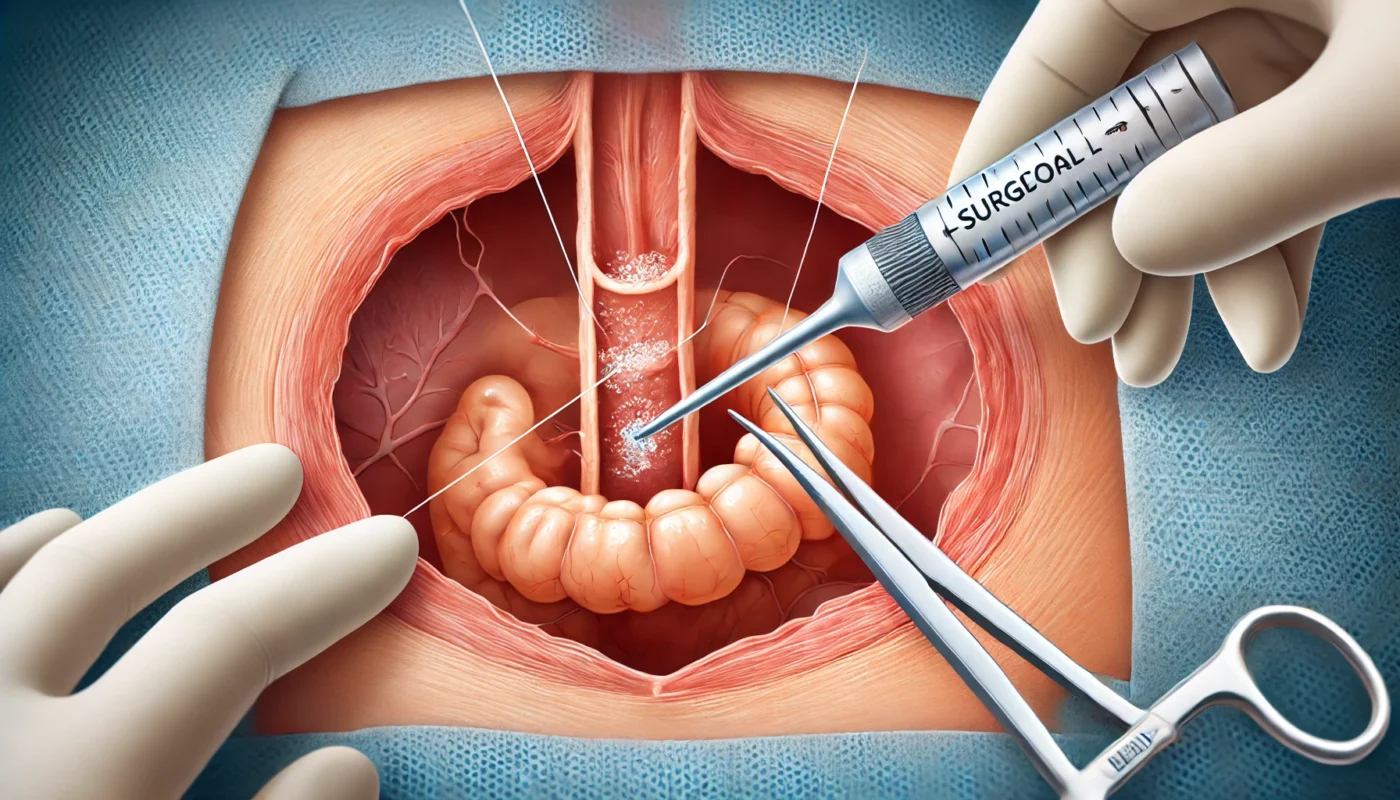In the ever-evolving world of minimally invasive surgery, laparoscopic procedures stand out for their ability to reduce recovery times and minimize scarring. A key player in this arena is surgical glue, a product that has seen significant innovations over recent years. But how does this adhesive work, and what does it mean for your recovery process? Let’s explore the latest advancements in surgical glue for laparoscopic procedures and how these innovations can benefit your health journey.
You may also like: Key Factors in Proliferative Wound Healing
Understanding Laparoscopic Surgery
To appreciate the role of surgical glue, it’s essential to understand laparoscopic surgery itself. Unlike traditional open surgeries, laparoscopy involves small incisions through which surgeons insert specialized instruments and a camera to perform the procedure. This approach reduces trauma to the body, leading to quicker recovery times, less pain, and minimal scarring.
The Basics of Laparoscopic Techniques
Laparoscopic surgery, often referred to as minimally invasive surgery, employs specialized instruments and a high-resolution camera, called a laparoscope, to view and operate on internal organs. The small incisions, usually about 0.5 to 1.5 centimeters in length, allow for the insertion of these tools. This technique minimizes the physical impact on the body compared to traditional open surgery, which requires larger incisions and can lead to more significant trauma and longer recovery times.
Advantages Over Traditional Surgery
The benefits of laparoscopic surgery extend beyond just smaller scars. Patients often experience less postoperative pain, reducing the need for pain medication and facilitating a quicker return to daily activities. Additionally, the reduced risk of infection and shorter hospital stays contribute to overall better outcomes. These advantages make laparoscopic surgery a preferred choice for many procedures, ranging from gallbladder removal to hernia repairs.
Common Procedures Performed Laparoscopically
A wide range of surgical procedures can be performed using laparoscopic techniques, including appendectomies, gastric bypass surgeries, and even certain types of cancer surgeries. The versatility of this approach is continually expanding as technology and surgical techniques advance. With each new procedure adapted to laparoscopic methods, patients can benefit from the minimally invasive nature of the surgery, enhancing recovery and outcomes.
The Role of Surgical Glue in Laparoscopic Procedures
Surgical glue acts as a closure method for these small incisions, offering an alternative to traditional sutures or staples. The glue forms a protective barrier over the incision, supporting the healing process while reducing the risk of infection. For patients, this means a more comfortable recovery experience and less visible scarring.
Comparing Surgical Glue to Sutures and Staples
Traditional methods of closing surgical incisions, such as sutures and staples, have been used for decades. While effective, these methods can be more invasive, sometimes leading to discomfort during removal and a higher risk of leaving visible scars. Surgical glue, on the other hand, provides a seamless closure, reducing these risks and often resulting in a more aesthetically pleasing outcome.
The Science Behind Surgical Glue
Surgical glues are specially formulated adhesives designed to provide a secure closure for surgical wounds. They work by creating a bond between the skin edges, sealing the incision and promoting natural healing. This bond not only supports tissue approximation but also acts as a barrier against bacteria, reducing the likelihood of infection. The success of surgical glue relies on its formulation, which must balance adhesive strength with biocompatibility.
Patient Experience with Surgical Glue
For patients, the use of surgical glue often translates to a more pleasant postoperative experience. Without the need for suture or staple removal, patients avoid additional discomfort. The clear and flexible nature of the adhesive allows patients to monitor the healing process easily, providing peace of mind. Moreover, the reduced scarring associated with surgical glue enhances patient satisfaction and confidence in their surgical outcomes.

Innovations in Surgical Glue
Recent innovations in surgical glue technology have enhanced its efficacy and application in laparoscopic procedures. These advancements focus on improved adhesive strength, biocompatibility, and longevity, making surgical glue an increasingly attractive option for surgeons and patients alike.
Enhanced Adhesive Properties
One of the primary goals of recent innovations is to enhance the adhesive properties of surgical glue. This improvement ensures that the glue can withstand the natural movements of the body, maintaining incision closure throughout the healing process. Enhanced adhesive strength reduces the likelihood of the glue peeling off prematurely, which can be a concern for some patients.
Adapting to Body Movements
Modern surgical glues are designed to be flexible, accommodating the body’s natural movements without compromising the integrity of the wound closure. This flexibility is crucial, especially in areas where the skin is subject to stretching or frequent motion. By maintaining a secure bond, the adhesive ensures that the wound remains closed, supporting uninterrupted healing.
Tackling Moisture Challenges
One of the challenges surgical adhesives face is maintaining their effectiveness in a moist environment. Recent advancements have focused on creating formulations that resist moisture and body fluids, ensuring that the adhesive remains effective even in challenging conditions. This innovation is particularly important for procedures involving areas prone to sweat or exposure to body fluids.
Strength and Durability Testing
Before reaching the operating room, surgical glues undergo rigorous testing to ensure they meet the necessary standards for strength and durability. These tests simulate real-life conditions, assessing how well the adhesive performs under stress and over time. The results help refine formulations, leading to products that provide reliable wound closure across various surgical scenarios.
Biocompatibility and Safety
Biocompatibility is crucial in surgical adhesives, as it determines how well the material integrates with the body’s tissues without causing adverse reactions. Innovations in this area focus on developing glues that are less likely to cause allergic reactions or irritate the skin. These biocompatible glues promote better healing and reduce the risk of complications.
Reducing Allergic Reactions
The development of hypoallergenic formulations is a significant focus in the advancement of surgical glues. By using materials that are less likely to trigger immune responses, these adhesives reduce the risk of allergic reactions in patients. This approach enhances patient safety and comfort, ensuring that the adhesive works harmoniously with the body.
Integration with Body Tissues
Biocompatible surgical glues are designed to integrate seamlessly with the body’s tissues, supporting the natural healing process. This integration minimizes the risk of inflammation and irritation, both of which can impede healing. By promoting a harmonious relationship between the glue and the body’s tissues, these innovations lead to better surgical outcomes.
Long-Term Safety Considerations
While short-term safety is a priority, long-term safety is equally important. Researchers are continually evaluating the long-term effects of surgical adhesives to ensure they do not have adverse effects on the body. This ongoing research contributes to the development of products that are safe for use, providing peace of mind for both surgeons and patients.
Longevity and Durability
Another significant advancement is in the longevity and durability of surgical glues. While traditional glues might peel off after a few days, newer formulations are designed to last longer, providing continuous protection as the incision heals. This extended durability aligns with the healing timeline of laparoscopic incisions, which typically take one to two weeks to heal fully.
Aligning with Healing Timelines
The longevity of surgical glues is carefully calibrated to match the typical healing timelines of laparoscopic incisions. By providing protection that lasts throughout the healing process, these adhesives minimize the risk of wound disruption. This alignment ensures that the incision remains protected until the skin has fully healed and is no longer vulnerable.
Innovations in Polymer Technology
Advancements in polymer technology have played a significant role in extending the durability of surgical glues. By developing polymers that are more resilient and adaptable, manufacturers have created adhesives that maintain their integrity over time. This innovation is critical for ensuring that the adhesive remains effective throughout the healing process.
Evaluating Environmental Impact
As with any medical product, the environmental impact of surgical glues is an important consideration. Innovations in this area focus on creating adhesives that not only perform well but also have a minimal environmental footprint. This commitment to sustainability ensures that surgical advancements do not come at the cost of environmental health.

The Healing Timeline for Laparoscopic Incisions
Understanding the typical healing timeline for laparoscopic incisions can help set realistic expectations for recovery. Generally, these incisions heal within one to two weeks, although individual experiences may vary based on factors such as overall health, the complexity of the procedure, and adherence to post-operative care instructions.
Factors Influencing Healing Time
Several factors can influence the healing time of laparoscopic incisions. Patient health, including age, nutrition, and existing medical conditions, can significantly impact recovery speed. Additionally, the complexity of the procedure and the extent of the surgery can also affect how quickly the body heals. Understanding these factors helps patients and healthcare providers tailor postoperative care to individual needs.
Typical Healing Stages
The healing process for laparoscopic incisions generally follows a predictable pattern. Initially, the body responds to the incision with inflammation, which is a natural part of the healing process. This phase is followed by the proliferation stage, where new tissue forms to close the wound. Finally, the maturation phase strengthens the newly formed tissue, completing the healing process.
Monitoring Healing Progress
Patients should monitor their incisions closely to ensure proper healing. This includes watching for signs of infection, such as redness, swelling, or unusual discharge. Regular monitoring allows for early intervention if complications arise, ensuring that any issues are addressed promptly. By staying vigilant, patients can support their recovery and achieve the best possible outcomes.
How Long Does Surgical Glue Last After Laparoscopy?
Modern surgical glues are formulated to last for the duration of the typical healing period. In many cases, the glue will naturally fall off as the skin heals. If the glue comes off prematurely, within the first few days post-surgery, it’s advisable to consult with your healthcare provider to ensure proper healing.
Expected Duration of Adhesive Strength
The adhesive strength of surgical glue is designed to last throughout the healing process, typically aligning with the one to two-week healing period for laparoscopic incisions. This duration ensures that the wound remains protected until it is fully healed. If the glue falls off naturally as expected, it indicates that the healing process is progressing well.
Early Adhesive Loss and Its Implications
If surgical glue comes off early, it’s important to assess the incision site for any signs of infection or improper healing. Early adhesive loss can expose the wound, increasing the risk of complications. In such cases, consulting with a healthcare provider is crucial to determine if additional closure methods are needed to support the healing process.
Managing Adhesive Loss with Care
When dealing with early adhesive loss, patients should focus on keeping the incision site clean and dry. Avoiding activities that may strain the incision can also help prevent further complications. By adhering to these guidelines and seeking medical advice when necessary, patients can ensure that their recovery remains on track, even if the adhesive comes off prematurely.
Managing Surgical Glue Coming Off Early
If you notice that surgical glue is coming off after just a few days, it’s important to monitor the incision site for signs of infection or improper healing. Keep the area clean and dry, and avoid any activities that might strain the incision. If you’re concerned, seek medical advice to determine whether additional closure methods are necessary.
Signs of Infection to Watch For
Monitoring for signs of infection is critical if surgical glue comes off early. Redness, swelling, increased pain, or unusual discharge at the incision site can indicate a potential infection. If any of these symptoms are present, it is important to contact a healthcare provider promptly to address the issue and prevent further complications.
Maintaining a Clean Environment
Keeping the incision site clean and dry is essential for promoting healing, especially if the adhesive has come off early. Patients should gently cleanse the area with mild soap and water, ensuring that it is thoroughly dried afterward. Avoiding lotions, creams, or other substances on the incision can also help prevent irritation or infection.
When to Seek Medical Attention
If there is any concern about the healing process, particularly if the surgical glue has come off prematurely, seeking medical attention is advisable. Healthcare providers can assess the incision and recommend appropriate interventions if necessary. Timely medical advice can ensure that healing continues smoothly, minimizing the risk of complications.

Benefits of Using Surgical Glue
The advancements in surgical glue technology provide several benefits for patients undergoing laparoscopic procedures:
- Reduced Scarring: Surgical glue minimizes scarring by eliminating the need for sutures or staples, which can leave more noticeable marks.
- Faster Healing: The adhesive provides a barrier that supports natural healing, potentially reducing recovery time.
- Less Pain: Without the need for suture removal, patients experience less discomfort during the healing process.
- Lower Infection Risk: By sealing the incision, surgical glue helps prevent bacteria from entering the wound, reducing the risk of infection.
Aesthetic Advantages of Reduced Scarring
One of the most significant benefits of surgical glue is its ability to minimize scarring. By eliminating the need for sutures or staples, surgical glue provides a seamless closure that often results in less noticeable scars. This aesthetic advantage is particularly important for patients concerned about the long-term appearance of their incisions.
Accelerated Healing and Recovery
Surgical glue supports natural healing by creating a barrier that protects the incision from external contaminants. This protective layer allows the body to focus on the healing process, potentially reducing recovery time. Patients can often resume normal activities sooner, thanks to the expedited healing facilitated by surgical glue.
Comfort and Convenience for Patients
The use of surgical glue eliminates the need for suture or staple removal, providing a more comfortable recovery experience. Patients avoid the discomfort associated with these traditional closure methods, enhancing their overall satisfaction with the surgical process. This convenience is a significant factor in the growing popularity of surgical glue.
Enhanced Safety Through Infection Prevention
By sealing the incision site, surgical glue reduces the risk of bacteria entering the wound, lowering the likelihood of infection. This infection prevention is crucial for ensuring a smooth recovery and minimizing complications. The protective barrier provided by the adhesive is a key factor in its safety and effectiveness.
Practical Tips for Patients
For those undergoing laparoscopic surgery, there are practical steps you can take to support your healing process:
- Follow Post-Operative Instructions: Adhere strictly to your surgeon’s guidelines regarding activity restrictions, wound care, and follow-up appointments.
- Monitor the Incision Site: Regularly check the incision for signs of infection, such as redness, swelling, or unusual discharge.
- Maintain a Healthy Diet: Proper nutrition supports the body’s natural healing processes. Focus on a balanced diet rich in vitamins and minerals.
- Stay Hydrated: Adequate hydration is essential for overall health and aids in recovery.
Adhering to Post-Operative Care
Following your surgeon’s post-operative instructions is critical for a successful recovery. These guidelines often include activity restrictions, wound care protocols, and scheduled follow-up appointments. By adhering to these instructions, patients can minimize the risk of complications and support optimal healing.
Importance of Monitoring the Incision
Regularly monitoring the incision site allows patients to detect any signs of infection or improper healing early. By catching potential issues promptly, patients can seek medical advice and address problems before they escalate. This vigilance is a key component of effective post-operative care.
Role of Nutrition in Recovery
A balanced diet rich in vitamins and minerals plays a crucial role in supporting the body’s healing processes. Nutrients such as vitamin C, zinc, and protein are particularly important for tissue repair and immune function. By prioritizing nutrition, patients can enhance their body’s ability to recover from surgery.
Hydration’s Impact on Healing
Staying adequately hydrated is essential for overall health and can significantly impact the recovery process. Hydration supports cellular function, aids in nutrient transport, and helps maintain healthy skin. By ensuring proper hydration, patients can contribute to a smoother and more efficient healing process.
Conclusion
Innovations in surgical glue technology have revolutionized the way we approach incision closure in laparoscopic procedures. These advancements offer numerous benefits, from enhanced healing to reduced scarring, making them a preferred choice for both patients and surgeons. By understanding the role of surgical glue and following practical recovery tips, you can optimize your healing journey and return to your daily activities with confidence. Embrace these innovations as a step forward in the world of minimally invasive surgery, and take charge of your health and well-being.
Embracing Technological Advancements
The continuous evolution of surgical glue technology highlights the importance of embracing new advancements in medical science. These innovations not only improve surgical outcomes but also enhance the overall patient experience. By staying informed about the latest developments, patients and healthcare providers can make informed decisions that prioritize safety and effectiveness.
Optimizing Your Recovery Experience
Understanding the benefits of surgical glue and following practical recovery tips can optimize your healing journey. By taking proactive steps to support your recovery, you can ensure a smoother transition back to normal activities. This empowerment is an integral part of modern healthcare, allowing patients to take an active role in their well-being.
The Future of Minimally Invasive Surgery
As technology continues to advance, the future of minimally invasive surgery looks promising. Continued research and development in surgical adhesives and techniques will likely lead to even more efficient and effective surgical procedures. By embracing these innovations, the medical community can continue to improve patient outcomes and transform the landscape of surgery.
Further Reading:
Incision & Surgical Wound Care
surgical glue, laparoscopic surgery, incision care, infection prevention, post-operative recovery, wound healing, patient safety, minimally invasive surgery, surgical adhesives, healthcare innovations
Important Note: The information contained in this article is for general informational purposes only, and should not be construed as health or medical advice, nor is it intended to diagnose, prevent, treat, or cure any disease or health condition. Before embarking on any diet, fitness regimen, or program of nutritional supplementation, it is advisable to consult your healthcare professional in order to determine its safety and probable efficacy in terms of your individual state of health.
Regarding Nutritional Supplements Or Other Non-Prescription Health Products: If any nutritional supplements or other non-prescription health products are mentioned in the foregoing article, any claims or statements made about them have not been evaluated by the U.S. Food and Drug Administration, and such nutritional supplements or other health products are not intended to diagnose, treat, cure, or prevent any disease.

